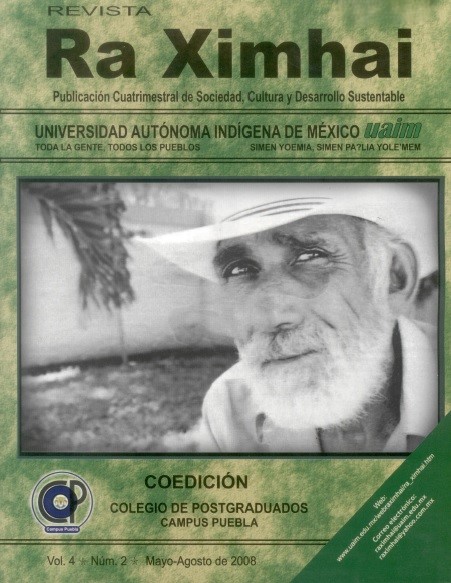Typology of teaching practice in technological higher education
DOI:
https://doi.org/10.35197/rx.04.02.2008.03.jvKeywords:
evaluation of teaching practice, process-product model, cluster typology, Higher technological educationAbstract
A study was carried out using the process-product model, also known as the teaching effectiveness model, in order to discover the characteristics of teaching activity, seeking to identify the important qualities for effective teaching and the way in which it is linked to the profile that the technological higher education reform has been developing since 2003. The population under study is the subjects or courses offered in the Degrees offered at the Technological Institute of Hermosillo. For the design of the sample, the courses taught in the different Degrees (170) were considered, making up the sample unit. In each course, 10 students were randomly selected from those who take the subject and were present at the time of data collection. The García-Valcárcel questionnaire (1995) was used, which integrates a series of variables whose objective is to know the teaching behaviors exercised in the course environment. The results of the cluster analysis showed three distinct profiles of teaching practice: logocentric, egocentric and psychocentric, differentiated in terms of teaching processes, motivation, evaluation and planning of the course, without corresponding to the profile desired by the reform. It is discussed in terms of the profiles and processes necessary to achieve their correspondence with that of the reform proposed by the SNIT.
Downloads
References
De Ibarrola, M. y E. Bernal. 1995. Tendencias actuales del subsistema de educación tecnológica en México: consideraciones y reflexiones. Documento presentado en el Seminario Subregional sobre Educación para el Mundo del Trabajo y Lucha contra la pobreza. Buenos Aires, 21-24 de Noviembre.
Díaz Barriga, F., y Hernández G. 1998. Estrategias Docentes para un Aprendizaje Significativo; Una Interpretación Constructivista. México, Mc Graw Hill, México, 230 pp.
Didou A., S. 2002. Las Políticas de Educación Superior en los Institutos Tecnológicos Federales: Una Reforma Inconclusa. Revista Mexicana de Investigación Educativa en Línea, Ene-Abr. 2002, Vol. 7, México, Núm. 14 pp. 51-73.
García-Valcárcel A. 1995. Modelos de Actuación Docente en la Enseñanza Universitaria. Tesis Doctoral Universidad de Cantabria, España.
Ibarra Colado E. 2001. La Universidad en México Hoy: Gubernamentalidad y Modernización. México, DGEP-UNAM / FCP y S -UNAM / UAM-I / ANUIES, Col. Postgrado, Núm. 16, 524 pp.
Luna, E. 2002. La Participación de los Docentes y Estudiantes en la Evaluación de la Docencia. Plaza y Valdez Editores, Universidad Autónoma de Baja California, México, 277 pp.
Neumann, Y. y Finaly Neumann E. 1989. An organizational behavior model of students' evaluation of instruction. Higher Education, Vol. 18, No. 2, Págs. 227-238. “Opciones de Cambio en la Educación Superior”, 1985, marzo (*) Trabajo elaborado por la Secretaría General Ejecutiva de la ANUIES.
Pérez, C. 2004. Técnicas de análisis multivariante de datos; aplicaciones con SPSS.
México, Pearson, Prentice Hall.
Rodríguez, R. 2001. Política de educación superior en México, año 2000. En Guadalupe Teresinha Bertussi (coord.) Anuario Educativo Mexicano: visión retrospectiva. México: UPN/La Jornada, vol. I. pp. 100-116.
Rodríguez, R. 2002. Continuidad y cambio de las políticas de educación superior.
Revista Mexicana de Investigación Educativa. Vol. 7, Núm. 14. Pp. 133-154.
–––––SEP. 1993. Reforma de la educación superior tecnológica por licenciatura. Vols.
a 19, México: SEP.
–––––SEP-COSNET. 1993. Propuesta de reforma de planes y programas de estudio de la educación superior tecnológica. Documento para análisis. México: SEP- COSNET.
–––––SEP-SEIT. 1995. Programa de Desarrollo de la Educación Tecnológica, 1995, 1995-2000. México: SEP.
Vargas, M. R., 2003. La educación Superior Tecnológica. Revista de la Educación Superior Tecnológica en Línea, núm. 126, Revisada en Jun. de 2003. Disponible en http://www.anuies.mx/index1024.html
Villa Lever, L., Flores-Crespo P. 2002. Las Universidades tecnológicas Mexicanas en el espejo de los institutos universitarios de tecnología franceses. Nuevas tendencias de la educación técnico-profesional en México. Revista Mexicana de Investigación Educativa, enero-abril, vol. 7, numero 14, pp. 17-49.
Downloads
Published
How to Cite
Issue
Section
License
Copyright (c) 2008 José Ángel Vera Noriega, María del Carmen Islas Sepúlveda, Claudia Karina Rodríguez Carvajal

This work is licensed under a Creative Commons Attribution-NonCommercial 4.0 International License.
Usted es libre de:
- Compartir — copiar y redistribuir el material en cualquier medio o formato
- Adaptar — remezclar, transformar y construir a partir del material
- La licenciante no puede revocar estas libertades en tanto usted siga los términos de la licencia
Bajo los siguientes términos:
- Atribución — Usted debe dar crédito de manera adecuada , brindar un enlace a la licencia, e indicar si se han realizado cambios . Puede hacerlo en cualquier forma razonable, pero no de forma tal que sugiera que usted o su uso tienen el apoyo de la licenciante.
- NoComercial — Usted no puede hacer uso del material con propósitos comerciales .
- No hay restricciones adicionales — No puede aplicar términos legales ni medidas tecnológicas que restrinjan legalmente a otras a hacer cualquier uso permitido por la licencia.








